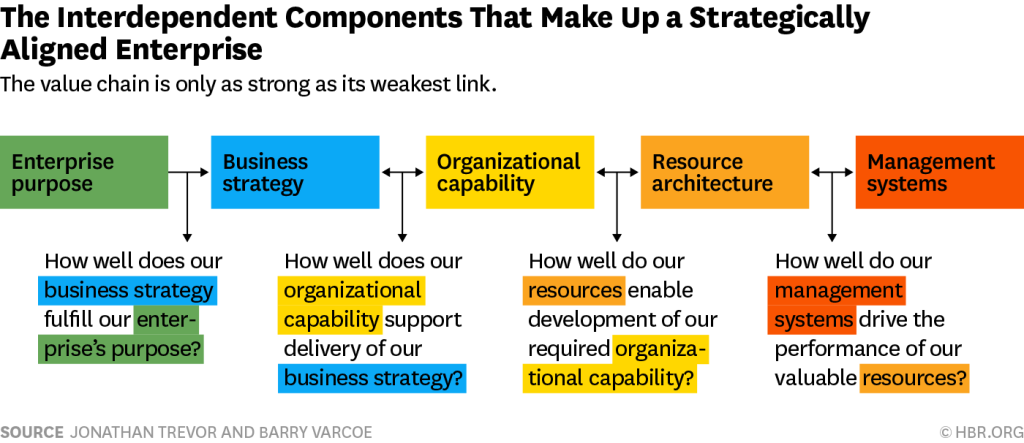As the conversation continues around the need for Sales and Marketing Alignment it is easy to focus on what tactics can be executed in order to achieve better alignment. There is great content coming out to help us better understand how to implement Account Based Marketing (ABM), the importance of Service Level Agreements (SLAs) and more. I, however, want to take a step back and ensure that we all understand what is causing the misalignment in the first place. I'm a firm believer that you can't fix a problem until you truly understand the underlying cause(s).
In a recent article published in the Harvard Business Review (HBR), the authors looked at what makes a truly aligned enterprise. In it they discuss alignment being a "tightly managed enterprise value chain" that links the enterprise's purpose, business strategy, organizational capability, resource architecture and management systems. What also came out of this article is four reasons for misalignment within the organization:
Four Reasons for Misaligned Enterprises
- Enterprise leaders are unaware of the risk of misalignment
- Nobody "owns" enterprise alignment
- Complexity makes enterprise alignment that much harder
- Activity is mistaken for progress
I think that all of these are accurate and valid reasons for why companies are misaligned overall and also highlight why the sales and marketing functions struggle to drive revenue together in the most efficient way. If we are to create a truly robust sales and marketing alignment strategy we must be prepared and willing to address these key issues that HBR has identified as the reasons for why enterprises are not aligned.
Asking the right alignment questions
Sales and marketing leaders must ask questions like "Does are CEO understand the risks associated with not aligning Sales and Marketing?", "Is our leadership ready to "own" making sure that all decisions made focus on aligning Sales and Marketing?", etc. This is the only way in which we can really start to have a productive conversation around what strategies need to be implemented to move the organization forward to better alignment.
While the recent focus on new B2B tech solutions is exciting, many times as HBR states, this activity of adopting new tech solutions is seen as progress without establishing adequate KPIs and reviewing if progress toward driving revenue growth is really being achieved.
Again, as leaders, let's start with asking the harder questions before potentially wasting time and money on short-term and short-sighted solutions.

